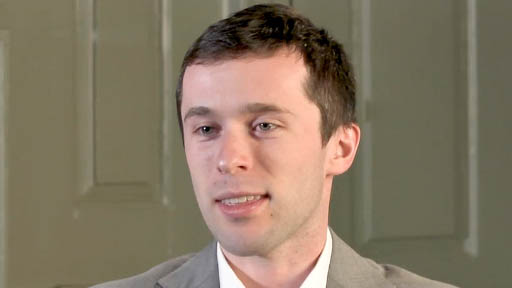
Floryan’s research on swimming has applications in propulsion systems
By
on
Earlier this year, Floryan was one of named one of the four winners of the Porter Ogden Jacobus Fellowship, Princeton University’s top honor for graduate students. The fellowships support their final year of study at Princeton and are awarded to one Ph.D. student in each of the four divisions (humanities, social sciences, natural sciences and engineering) whose work has exhibited the highest scholarly excellence. The Jacobus Fellows were honored at Alumni Day ceremonies in February.
Floryan, a doctoral student in mechanical and aerospace engineering since 2014, holds a B.S. in mechanical engineering and a B.A. in economics with a minor in mathematics from Cornell University. His dissertation, “Hydromechanics and optimization of fast and efficient swimming,” employs experimental and computational methods to better explain how fish swim most effectively.
“I knew that I wanted to work on fluid mechanics broadly,” Floryan said. When he found the fish swimming project, “it was something that really struck me, because more than anything else it’s sort of curiosity-driven.”
Using this understanding of the underlying physics of high-performance biolocomotion, Floryan provides guidance for its application in humanmade propulsion systems.
“In my career I plan to pursue questions of ‘how things work’ that can be explained by applied mathematics and principles of mechanics,” Floryan said.
At Princeton, Floryan has received the School of Engineering and Applied Science Award for Excellence, the Brit and Eli Harari Post Generals Fellowship, the Sayre Award for Academic Excellence, and the Charles W. Lummis Scholarship. He is a recipient of a 2015 Guggenheim Fellowship.
Floryan began his research after joining a U.S. Department of Defense Multidisciplinary University Research Initiative with Clancy Rowley, professor of mechanical and aerospace engineering, and Alexander Smits, the Eugene Higgins Professor of Mechanical and Aerospace Engineering, Emeritus, and senior scholar. In 2014, Smits and Rowley began investigating a basic understanding of the physics involved in swimming fish to serve as the foundation for building underwater vehicles for the U.S. Navy.
“What I didn’t expect, and what I think Lex didn’t expect either, was that one student would be able to work with both of us and make so much headway on both parts of this project,” Rowley said. “It’s also special that he has such a broad range of skills, in the lab, at a computer, and with a pencil and paper. He’s excellent at all of these things.”
Smits said Floryan’s research could change how swimming robots are designed and engineered.
“Daniel’s work has given us a lot of insight about how these systems scale up to larger sizes and then how to design the flexibility of a fin appropriately to get the most efficient performance or the greatest thrust from these fish-like swimmers,” Smits said. “It’s conceivable it will have a real impact.”







